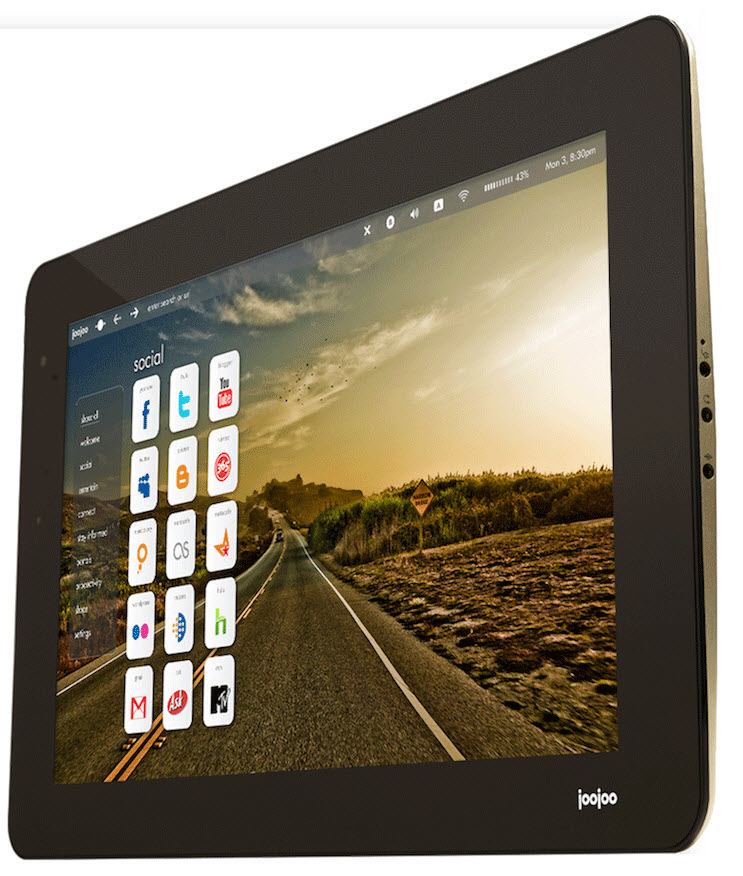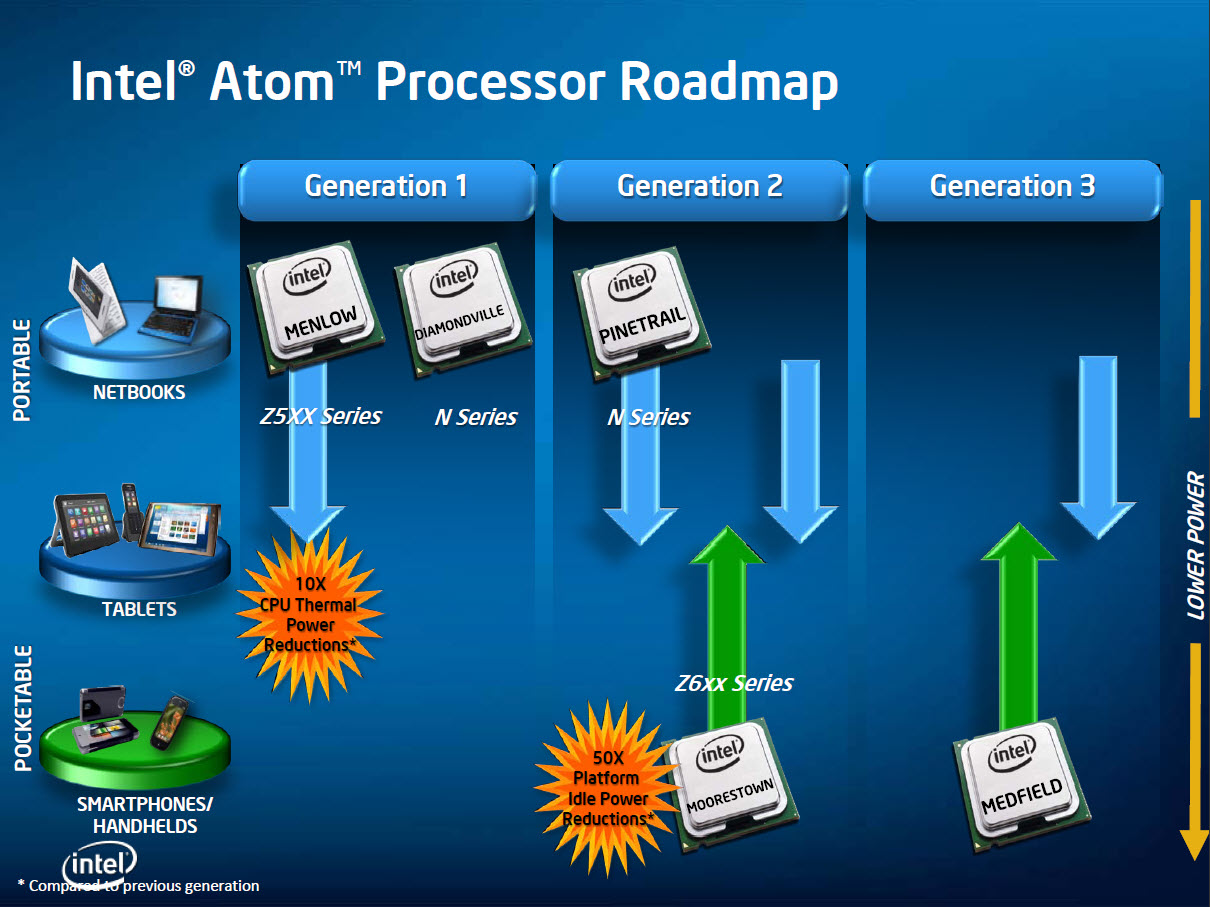Meet Moorestown: Intel's Atom Platform For The Next 10 Billion Devices
Intel’s second-gen Atom platform, Moorestown, positions the chip giant to have a killer smartphone and MID platform in 2010. The old Atom Z5xx drawbacks seem fixed. Why does Moorestown rock, and will it be enough to let Intel advance in this market?
Checking Checkboxes
Now, I may be totally wrong about my phone-as-mainstream-PCs thesis. Once I started asking questions in this vein, and about how phones might soon cannibalize desktop and laptop sales, only at much lower price points, Intel reps were quite prompt about trying to divert me from the notion. “That’s not how people use these devices,” commented one rep. I wanted to reply, “Maybe. Then again, they’ve never been able to use these devices in that way.”
Ironically, it was Intel’s opening commentary at the briefing that set me down this thought path. One presenter noted how tomorrow’s smartphones would allow buyers to “get a powerful computer that also happens to make phone calls.” With Moorestown, the company added, “this really hits you in the head.”
As usual, Intel assiduously avoided mentioning rival phone platforms by name, but reps did observe that today’s top three to five smartphones are “increasingly becoming handheld computers.” The company even did an informal study of these leading phones and paid close attention to the first 20 words or so of the marketing on their Web pages. In every case, not one product talked about making phone calls. Instead, the marketing lingo targeted four primary performance vectors that consumers now demand: compute, graphics, video, and Web.
Purists can sit around and debate which phone has better voice quality and reception, but Intel’s point came through loud and clear. Voice functionality is now a checkbox item. All it has to do is be good enough. The public doesn’t demand anything better anymore, at least from a phone. Of course, demands on carriers are a different matter entirely. AT&T, can you hear me now? One of the press managers in Intel’s group noted that her daughter logs in an average of 30 minutes of voice time on her phone per month—and 3,800 texts. That’s not even the future of “phone” usage. That’s now.
The next checkbox item is battery life. The reality is that we all charge our phones every night. Occasionally, some unforeseen adventure or bout of brain impairment might result in needing to stretch for three or four days, but it’s rare to need a phone’s standby battery time to last for more than 48 hours. This is why you never saw a handset based on Intel’s former ultramobile processor, the Atom Z5xx, code-named Silverthorne and part of the Menlow CPU/chipset/wireless platform. Despite having a 2.4W TDP, active battery life under Menlow was atrocious. Given reports of Menlow-based devices like the JooJoo tablet only lasting 2.5 hours under moderate use (compared to the iPad’s 10+ hours), no wonder Silverthorne has kept a microscopically low profile on store shelves.
But what if battery runtime were no longer a problem? What if Intel could check the 48-hour box and move on? OK, a little spoiler here: Intel did. Moorestown smashes the power problems faced by former Atom designs, and in a minute I’ll show you how. Fixing the power problem entailed a lot of rethinking and innovation on Intel’s part, and this leads me to a final thought (for now) on the long-term significance of Moorestown. Look at this:
In general, Intel (and the rest of the processor world with it) has been in the habit of innovating from the top down. The Nehalem launch was another in a long line of examples. New architectures and technologies are made for the top of the market, then they gradually filter down into cheaper and smaller implementations.
Get Tom's Hardware's best news and in-depth reviews, straight to your inbox.
With Moorestown, though, I see a development reminiscent of the Pentium M. This is innovation from the bottom up, because there’s a lot more to Moorestown than just a power breakthrough. The Z6xx is also Intel’s first fully integrated System on Chip (SoC). The Clarkdale-based Core i5 and Core i3 cram processing and graphics into the same socketed package, but the Z6xx actually builds them into the same die, a feat Intel has never released before. Did Intel have the capability to do an SoC before now? Of course. But not until now, in this product segment, did it make sense to bring an SoC to market. Intel had to fix its power issues before any other steps made sense, including pushing an SoC up the processor chain into tablets (still virtually a dead segment until the iPad’s release), netbooks, nettops, and perhaps even notebooks.
We don’t know yet how much influence the Atom family will have on the entire spectrum of computing devices, but it’s clear that innovation is no longer only a top-down affair. Breakthroughs are going to be coming fast and furious from the bottom, and their impact on the middle 80% of the market may become much more significant than changes happening at the top.
Current page: Checking Checkboxes
Prev Page Little, Less, And Loving It Next Page The Moorestown Breakdown-
yannifb Huh, i wonder how this will compete with Bobcat, which supposedly will have 90% of desktop chip performance according to AMD.Reply -
descendency Why isn't this a 32nm product yet? If your concern (which it would be with said devices) is power consumption, shrinking the die can only help...Reply -
Greg_77 silverx75Man, and the HTC Incredible just came out....Man, and I just got the HTC Incredible... ;)Reply
And so the march of technology continues! -
well we can only wait till amd gets their ULV chips out with their on die graphics so we can get a nice comparison.Reply
-
williamvw descendencyWhy isn't this a 32nm product yet? If your concern (which it would be with said devices) is power consumption, shrinking the die can only help...Time to market. 45 nm was quicker for development and it accomplished what needed to get done at this time. That's the official answer. Unofficially, sure, we all know 32 nm will help, but this is business for consumers. Right or wrong, you don't play all of your cards right away.Reply
-
seboj I've only had time to read half the article so far, but I'm excited! Good stuff, good stuff.Reply -
burnley14 This is more exciting to me than the release of 6-core processors and the like because these advances produce tangible results for my daily use. Good work Intel!Reply -
ta152h Do we really need x86 plaguing phones now? Good God, why didn't they use a more efficient instruction set for this? Compatibility isn't very important with the PC, since all the software will be new anyway.Reply
I like the Atom, but not in this role. x86 adds inefficiencies that aren't balanced by a need for compatibility in this market.


